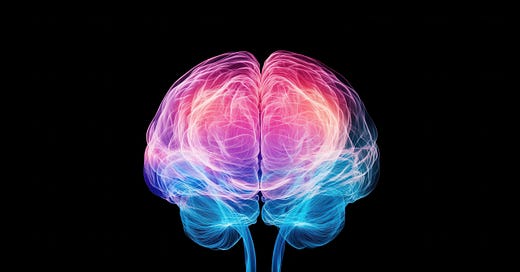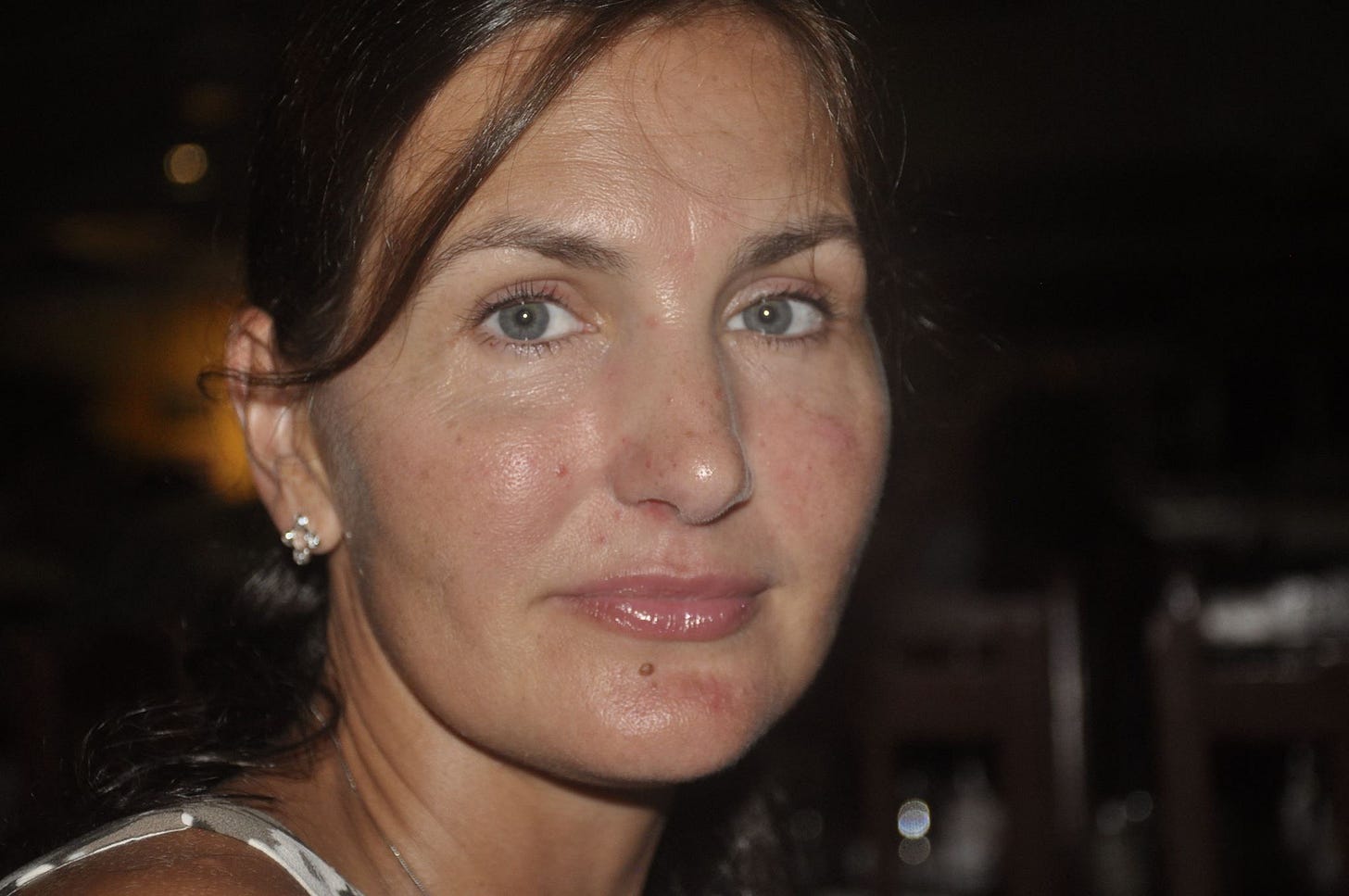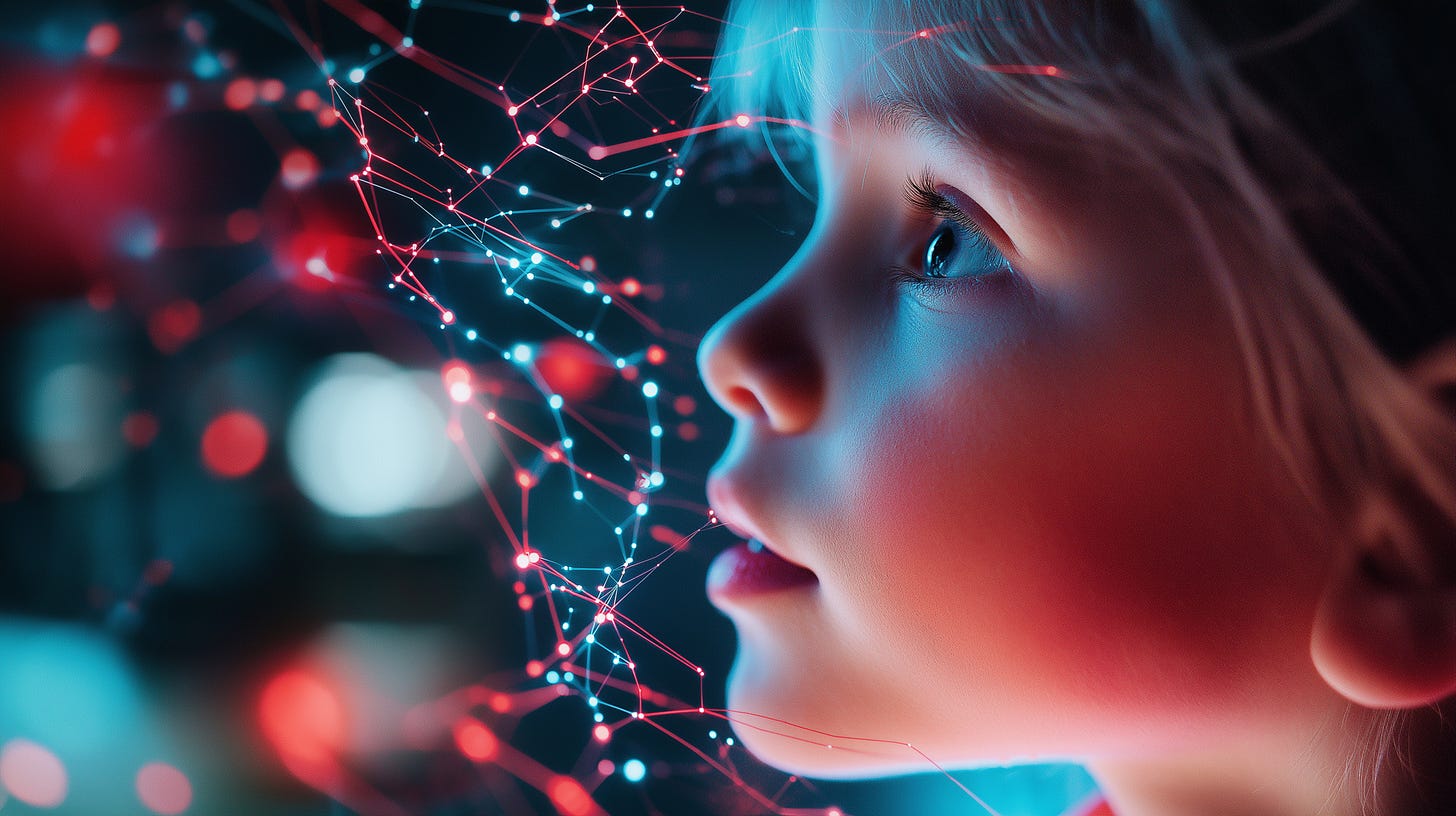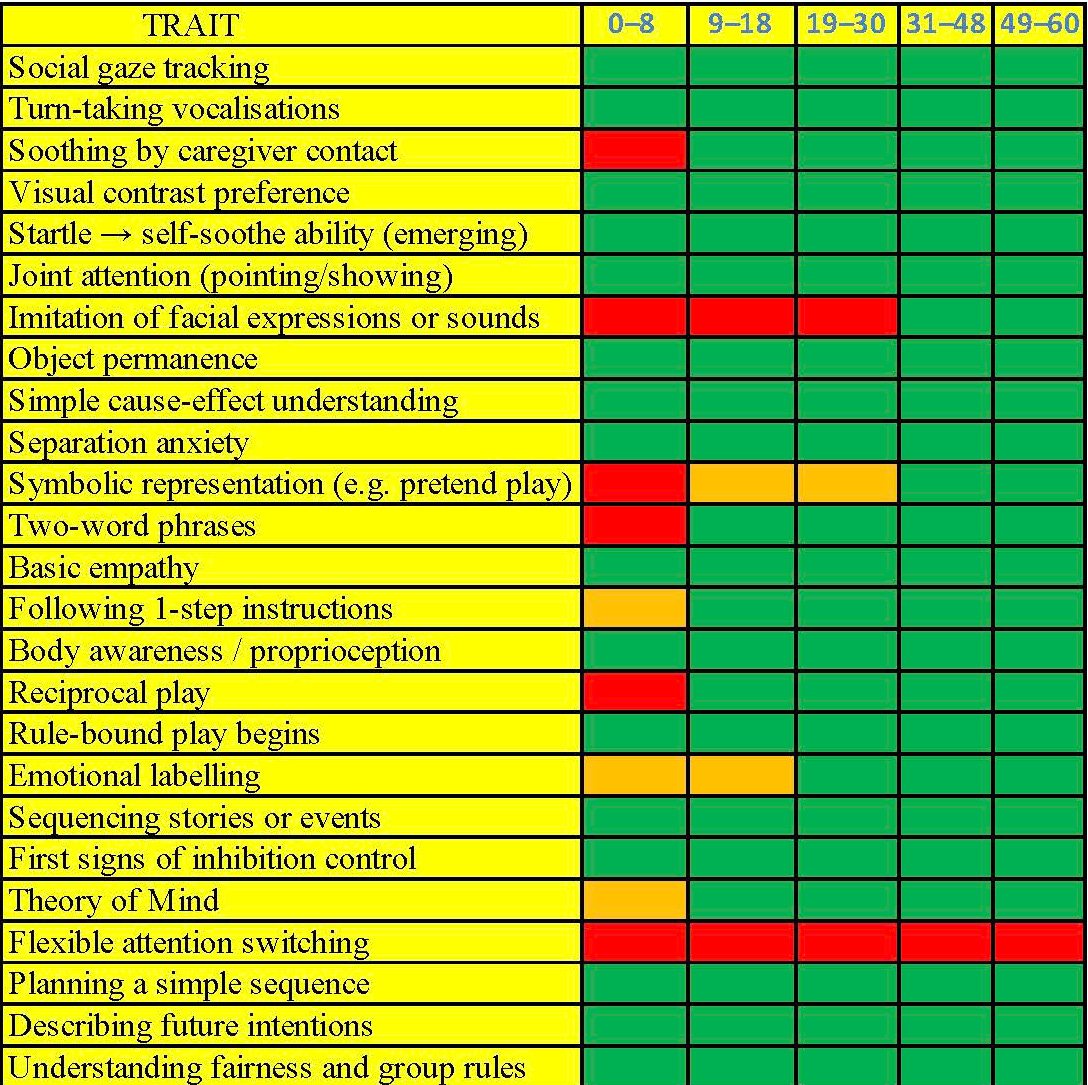What Kind of Jellyfish Do You Want Your Child to Be?
Don’t Raise a Reactive Child — Do This Instead
You are not your thoughts.
Not until you choose them.
But most of us never do.
We drift through life like jellyfish — reactive, automatic, beautifully designed… but blind.
That’s the subconscious. The ancient part of your nervous system that reacts before you even know it — your jellyfish mind.
You are a jellyfish.
Not in body — in mind.
Floating on currents, you never chose.
Thoughts appear.
You’re in the shower — water running, hands moving — when suddenly your mind is in a meeting that hasn’t happened yet.
Or on a beach that’s three months away.
You didn’t ask it to go there.
It just… went.
That wasn’t you thinking.
That was a thought… thinking you.
Most of us live this way.
Beneath awareness. On autopilot.
It’s easy to dismiss the jellyfish mind.
But what if it’s not the problem?
What if it’s doing exactly what it evolved to do?
So the real question isn’t:
Are you a jellyfish?
BUT
What kind of jellyfish do you want to be?
We all want a Good Life.
But What does a good life look like?
Maybe you’ve never asked that question out loud.
But I’d bet… you’ve felt it.
When you’ve stood still in the middle of a busy life and wondered, Is this it?
Or smiled at something small — and thought, Maybe this is enough.
We all ask it, in different ways.
So before I tell you my answer…
Let me ask you:
When was the last time you felt it — even for a moment?
A time when nothing was missing.
When you were fully there — with people you love or alone with something beautiful.
Was it planned?
Or did it surprise you?
And if you trace the path that led there —
who made the decisions that got you there?
Who shaped the choices?
The beliefs about what your life should look like?
Because sometimes, a good life moment arrives…
and you realise you didn’t design it — it just happened.
I had a moment like that once — on a beach in Bali.
My mum’s 88th birthday.
The sky lit up with fireworks — My mum shared her birthday with Indonesian Independence Day — and we were surrounded by friends, family, food, and music.
My mum turned to the waiter, pointed at the sky, and said:
“Look at what my son has done for me.”
I almost corrected her.
But then I saw her face — lit with joy — and thought:
Let the illusion be real.
Everyone was smiling. Everyone was present.
And for just a moment… it felt like everything had come together.
Maybe that’s what a good life looks like.
When Everything Changed
That trip to Bali was also the final stop on a round-the-world journey with Galyna — my partner. Willows won Business of the Year for her unique pedagogy.
I’d persuaded her to take a break — just for a few weeks.
Neither of us knew that six months later, everything would change.
Galyna was diagnosed with ovarian cancer.
We all have moments that break the pattern.
Moments that arrive without warning… and leave nothing unchanged.
Maybe for you it was a diagnosis.
Or a phone call in the night.
Or the quiet ache of watching something end before you were ready.
Think of that moment — just for a second.
Not the pain.
The stillness.
When the world didn’t feel good or bad.
It just… was.
I’ve had that moment.
Twice.
Nadira 1961 - 2002
Galyna 1972 - 2017
I’ve been widowed twice.
I’ve raised children alone. Twice.
When Nadira died, I asked, Why me? Full of self-pity.
But when Galyna died… something had shifted. I understood the Buddhist philosophy: “There is no good or bad; there just is”.
I was still.
And strangely, I was grateful.
Without the pain of loss, I would never have known the magic that was Galyna.
And Galyna
She showed us how children truly learn.
That love isn’t just something we feel — it’s something we build into systems.
The Willowsway.
Galyna believed that a happy child begins with four things:
Good nutrition. Movement. Gratitude. And love.
I’ll be honest — it sounded a bit hippy to me then.
I was an immunologist.
I dealt in cytokines, not cuddles.
But the results?
Happy children.
And what she knew intuitively, I began to see in the science.
That learning isn’t just cognitive.
It’s biological.
That stress and inflammation shape who a child becomes.
That love is a kind of architecture — a scaffold for the mind.
Somehow, I became the owner of three preschools.
Despite knowing nothing about teaching.
Or business.
Looking back, I’m not sure I was even ready to be a husband —
Let alone a single dad.
But like most things in life that arrive without a manual…
It was the making of me.
One night, exhausted and angry, I was writing a protest letter to a government watchdog – anyone that knows me, knows I am good at protesting.
And that’s when it hit me:
The Willowsway wasn’t just a philosophy.
It was a system.
We planted gratitude, movement, nutrition, and love…and children bloomed with kindness and curiosity. But I didn’t understand the soil — what made it all grow? What was happening at the cellular level?
The Brain is Blind
That protest letter morphed into my first book on how children learn.
I started asking questions I’d never been trained to ask.
I’m not a neurobiologist.
I’m not a philosopher.
I’m not a teacher.
So if you’re expecting prefrontal cortex diagrams or MRI scans…
you’re in the wrong talk.
But I do believe in simple questions.
And here’s one:
What is a thought?
We often imagine the brain as some all-seeing control centre —
masterfully analysing the world.
But here’s the truth:
The brain is blind.
It sits inside a dark, silent cave — the skull.
No light. No sound. No touch.
Just a constant stream of electrical signals.
It has no direct access to reality.
It relies entirely on the body —
on your eyes, ears, skin, nose, and tongue — to deliver raw sensory data.
And from that stream of signals, it builds something astonishing:
A model.
A guess.
A version of the world.
Every thought is part of that model.
Not truth — but probability.
Not certainty — but story.
And when a baby is born, they don’t even have that.
They’re unfinished.
Their brain is waiting —
hungry —
for experience to shape the model.
To begin becoming.
Installing Cognition
So what does it mean to become human?
It means building the apps.
Not the ones on your phone —
the cognitive ones.
The human brain is biologically wired to anticipate certain types of interaction.
Language.
Attention.
Empathy.
Imagination.
Social connection.
We don’t download these at birth.
We develop them.
We code them.
Line by line.
Through experience.
Faces. Language. Warmth. Movement. Rhythm.
The brain doesn’t just receive this input.
It waits for it.
And when it comes —
at the right time,
in the right way,
in the right amount —
the brain fires, wires, and grows.
This is becoming.
Each app — empathy, focus, imagination — becomes part of your operating system.
And together, they form your personality — the unique jellyfish pattern that floats through your life.
The foundational apps of personality and identity are installed.
They’re not selected.
They’re not chosen.
They’re coded by the environment —
through repetition,
through rhythm,
through stress…
or love…
or neglect.
Who writes this code?
Parents.
Caregivers.
Nursery staff.
Early educators.
The systems we place children into.
We’re not just raising children.
We’re installing cognition.
We’re shaping emotional defaults.
We’re deciding — often without realising —
Where a child’s nervous system will settle
on the spectrum between curiosity… and survival.
Thoughts Are Offered, Not Chosen
Our brain builds a model of the world —
a story stitched together from sensory experience.
But here’s the twist:
Most of the thoughts you have… aren’t yours.
They’re Served up automatically by a reactive, predictive system shaped by your operating system.
Your internal operating system is built early.
Shaped by the environment.
And it doesn’t just run the apps —
it determines which ones you can even install.
Your OS defines your preferences.
Your priorities.
Your personality.
If you grow up in chaos — your OS optimises for vigilance.
If you grow up in calm — it optimises for exploration.
And here’s the kicker:
The OS decides which thoughts even make it to your attention.
This is why two children can sit in the same classroom
and live in entirely different worlds.
So, if we want to talk about neurodiversity,
we must stop pretending it’s all genetics.
Many children today build their minds
in high-stress, low-nurture environments.
Their adaptations aren’t disorders.
They’re survival strategies.
Neurodivergence isn’t a flaw.
It’s the brain doing its best with the data it was given.
And guess what part of the brain hates upgrades to the OS?
The Ego.
The ego is the gatekeeper.
The app store admin.
It clings to what works — even when it no longer serves us.
So, how do we shift? How do we create Apps?
That’s where the TGTS model comes in.
“The Space Between Thoughts”
Imagine this:
You’re in the shower.
Same water. Same routine.
And suddenly — a thought appears.
About work.
Or someone you argued with.
Or a conversation you haven’t had yet.
You didn’t choose that thought.
It was offered.
Neuroscientists call this system the Default Mode Network —
the part of your brain that’s active when you’re not focused on the outside world.
It’s where your mind wanders, where your inner narrator lives.
We call it the ego —
the part of you that protects the Apps you’ve already installed.
It’s not logical. It’s not curious. It’s familiar.
And its job is to keep you predictable — even if it means staying stuck.
That’s the Thought Generator — the Jellyfish Mind.
Reactive. Predictive. Automatic.
Always running, feeding you thoughts based on your OS, your past, your stress state.
But something else can happen.
You notice the thought.
You pause.
You don’t just react.
That pause is the Thought Selector —
What I call the supraconscious.
It doesn’t create new thoughts.
It chooses which ones become you.
TG produces.
TS selects.
TG refines.
That loop is where free will begins.
It’s a tiny moment — but it’s everything.
I call that moment PreForm.
It’s the editing room.
The place where you choose which thoughts to stitch together…
and which to leave on the cutting room floor.
But if your OS is rigid…
If your system is overwhelmed…
Then, the Selector never gets in.
And the thought that was offered… becomes the thought that defines you.
PreForm is where story becomes self.
And the more flexible your system…
the more human your choices become.
Here’s the twist:
The part of you that drifts — the jellyfish mind —
was never broken.
It’s evolutionary genius.
But genius is built for survival… not for flourishing.
But we don’t live on the savannah anymore.
And survival… isn’t enough.
If we want reflection, imagination, empathy —
we need something more.
Inflammation and the Fork in the Road
We have a choice —
A fork in the road our nervous systems face every day:
One path wired for vigilance.
The other… for possibility.
That space between the thought that appears… and the one you select?
It’s fragile.
In my book SIPS, I introduced this idea:
Micro-inflammation helps learning. It’s the body’s “pay attention” signal.
But chronic low-level inflammation —
the kind that never turns off — has the opposite effect.
It strengthens the fear response.
It scrambles the Thought Generator.
It weakens the Thought Selector.
Sometimes the Selector can’t stay with a thought — like in ADHD.
Thoughts flood in, but none stick.
Other times, it locks onto a single thought — like in ASD.
That thought loops… and won’t let go.
Either way — PreForm collapses.
Reflection disappears.
Choice vanishes.
So here’s the fork in the road:
On one path —
the modern world: fast, reactive, inflamed.
On the other —
the Willowsway: slow, relational, anti-inflammatory.
One path trains the brain for reaction.
The other — for reflection.
One path closes PreForm.
The other holds it open.
This isn’t about education.
It’s about cognitive architecture.
And every day —
we’re building the environment that creates the mind.
Two Cognitive Landscapes
Let me show you what this looks like.
This is a cognitive profile from the pre-Anthropocene world —
before the environment was engineered to be fast, loud, and always on.
Pre- Anthropocene Cognitive Profile
Age Months
Green apps install smoothly.
Emotional regulation develops in sync with attention.
Speech, imagination, focus — all finding their rhythm.
Now here’s what we’re beginning to see more and more:
Age Months
The same framework.
But this time — more delay.
More fragmentation.
More traits firing out of sync.
Not because children have changed.
But because the environment has.
This isn’t a biological fault.
It’s an adaptive response to chronic environmental stress.
This is not failure.
It’s survival.
Science now tells us that the environment doesn’t just shape behaviour — it can modify how genes are expressed.
This is called epigenetics.
And when it comes to the mind, I call it Cognitive Epigenetic Modification CEM.
That’s when lived experience shapes the apps we install — and the jellyfish we become.
Every red box is the brain saying:
This is the best I can do with what I’ve been given.
We call it disorder.
But it’s design.
CEM - The process by which lived experience reshapes cognition.
Not just once —
but over and over again.
So maybe we need to stop asking:
What’s wrong with this child?
And start asking:
What does their system allow right now — and what kind of environment might unlock more?
Because cognition isn’t fixed.
It’s shaped.
And reshaped.
Through love, movement, food, safety, gratitude…
and the space to explore.
Narrative — The Willowsway
This is why the Willowsway exists.
Not to speed things up.
Not to push children toward some artificial standard of success.
But to create the right conditions
for their unique cognitive fingerprint to form
without interference.
Because every trait in that profile —
attention, imagination, speech, movement —
is experience-expectant.
The brain is waiting.
And if the input comes — in the right way, at the right time —
the apps install.
But if the environment is chaotic, stressful, malnourished, or overstimulating,
the brain doesn’t fail.
It adapts.
Some apps don’t install.
Some get locked.
Some run in glitchy, defensive mode.
That’s not disorder.
That’s design.
At Willows, we assess cognitive profiles not to label —
but to understand.
We use traffic lights — green, amber, red —
not to shame, but to see clearly.
To meet each child where they are
and help them move forward.
And how do we help them move forward?
Through in-the-moment planning. We play to the unique child
It means we don’t follow fixed scripts or one-size-fits-all lesson plans.
We watch. We wait. And we respond — when a child’s profile shows it’s ready.
Not when the curriculum says.
Not when the clock says.
But when the child says — through their engagement, their curiosity, their spark.
Because the brain doesn’t grow on command.
It grows when the moment is right.
You’ve seen the profiles —
two children in the same classroom,
but with wildly different internal maps.
One flies in imagination but struggles with speech.
One is fluent in language but cautious in movement.
Because they’re not just children. They’re different jellyfish — with different apps, running on different operating systems, in response to different environments.
Neither is broken.
They’re just running different apps
on different OSs.
And now imagine a child with a green light on every trait.
Not because they’re gifted.
But because the environment was designed for growth — not survival.
Because they were held.
Heard.
Challenged.
And loved.
That’s not a fantasy.
That’s what happens when we design for potential instead of compliance.
So let’s stop diagnosing.
Let’s start understanding.
Let’s stop pathologising.
Let’s start profiling.
Let’s give every child the freedom to become who they are —
not who the system expects them to be.
Let’s stop trying to fit every child into a single colour —
all towing the party narrative.
And start celebrating a rainbow of jellyfish —
minds with movement, minds with agency.
The Good Life, Revisited
So… what does a good life look like?
That question began this story —
on a beach in Bali, fireworks in the sky, love in the air.
But it’s not a question I want to answer for you.
And it’s not a question we should answer for our children.
Let’s give them the tools to decide for themselves.
To build an operating system rooted in safety.
To install the apps that help them thrive.
To select the thoughts that serve them —
not just react to the ones that don’t.
How?
Talk to your kids.
Eat with them.
Laugh with them.
And then… take a step back.
Trust them.
Trust that when the environment is right,
the system knows what to do.
Because that’s what shapes the mind.
That’s what builds the profile.
That’s what defines a life.
The good life is one where the nervous system feels safe enough to explore.
Where PreForm stays open.
Where agency can grow.
And if you're still in doubt about the existence of free will…
I leave you with this:
You didn’t choose your thoughts.
But now you see where they come from.
And with that awareness —
you can choose what they become.
That is agency.
That is freedom.
That… is the beginning of a good life.
Intellectual Property Notice
The SIPS Model™, PreForm™, TG/TS Loop™, Cognitive Epigenetic Modification (CEM)™, and The Jellyfish Mind™ are original frameworks by Dr. Kevin Rigley (2023–2025). Use of these concepts must include attribution. For citations, licensing, or collaboration: Kevin@Willowspreschool.org.uk










Fascinating!
Wow! This is brilliant - very touching.